A Meeting of Worlds: Where the Weeds Grow Tall
Published 31 October 2024 in Pedagogical experiments
2 April 2023 UN Buffer Zone, Nicosia, Cyprus
Organisation and facilitation
Denise Araouzou
Co-facilitator
Charis Charalambous
Participants
Leontios Toumpouris, Vijdan Şengör, Evagoras Vanezis, Eleni Odysseos, Erman Dolmaci, Ömür Ray, Christina Skarpari, Argyro Toumazou, Victoria Pavlou, Nurtane Karagil, Kemal Aşik
Organisation and facilitation
Denise Araouzou
Co-facilitator
Charis Charalambous
Participants
Leontios Toumpouris, Vijdan Şengör, Evagoras Vanezis, Eleni Odysseos, Erman Dolmaci, Ömür Ray, Christina Skarpari, Argyro Toumazou, Victoria Pavlou, Nurtane Karagil, Kemal Aşik
An intercommunal gathering unfolding at the nexus of art education, socially-engaged artistic practices, sustainability studies and environmental pedagogies with the aim of inquiring into the possibilities of ecopedagogy as a process for a socio-ecological paradigm shift and peace-building in Cyprus. The workshop was hosted by Home for Cooperation, a community centre dedicated to bridge-building between divided communities located within the UN Buffer Zone in Lefkosia, Cyprus.
About
A meeting of worlds where the weeds grow tall was a one-day workshop designed to build a shared understanding across practices, their vocabularies, and the participants’ respective interpretations and responses to the ecological, social and political crises. It was conceived so that if participants wanted to initiate collaborations around building ecopedagogical programs together, they had the opportunity and means to do so. Several participants continued after this first encounter and participated in the Xarkis Festival.
The workshop invited curious pedagogues, cultural workers, researchers, scientists and activists, who work with or teach teenagers and young adults. In Cyprus, it is more challenging to implement experimental, action-oriented ecopedagogical learning experiences within formal education beyond primary education. Yet, it is the teenagers and young adults who are most affected by feelings of helplessness, ecoanxiety and frustration. Therefore this workshop focused on bringing together practitioners who are working with teenagers and adults to think about how ecopedagogical practices can flourish within and beyond the rigid boundaries of curricula and academia.
The workshop was hosted by Home for Cooperation, a community centre dedicated to bridge-building between divided communities located within the UN Buffer Zone in Lefkosia, between the checkpoints named after the landmark hotel The Ledra Palace. Home for Cooperation was established by the Association for Historical Dialogue and Research (AHDR) and officially opened in 2011 just across the street from now abandoned hotel.
The priority of the workshop was not information transfer nor was it outcome set. There was no set objective other than to plant seeds that would leave participants curious to explore ecopedagogies further through collaborations among them, or within their own practice. It was important that participants began by exploring what ecopedagogy is and what it could be through dialogue and engagement with the politically and ecologically significant site. The flow of the day was inspired by the work of designers, ecologists, activists, scholars and collectives, including adrienne maree brown, Joanna Macy, Hackers & Designers and the collective Gesturing Towards Decolonial Futures.
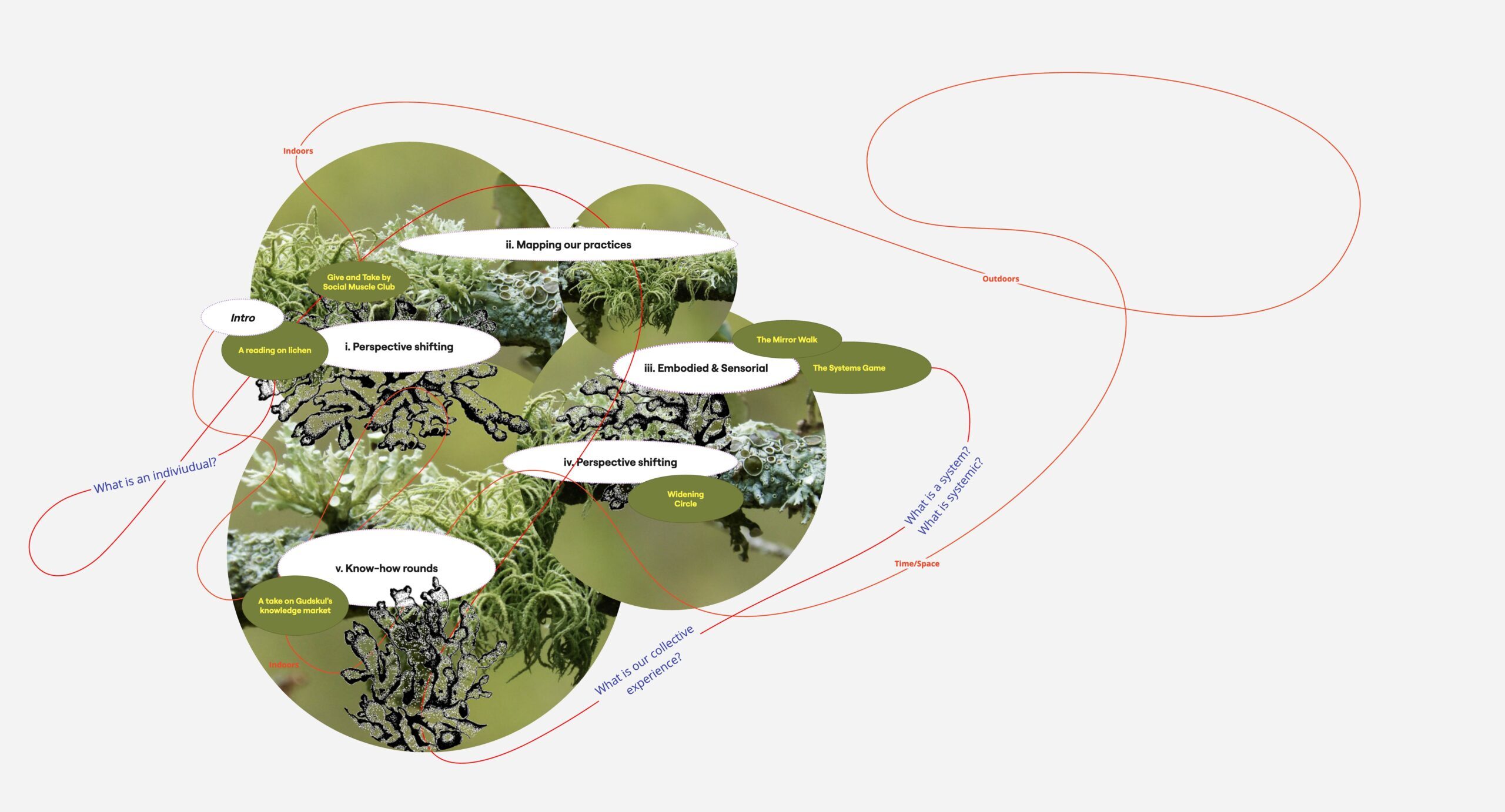
Diagram 1. Flow of ‘Where the weeds grow tall’. By Denise Araouzou
i. Perspective Shifting
Decentering the human-centred perspective
Donna Haraway wrote The Companion Species Manifesto (2003) to describe and elucidate the mutually dependent relationships among human and more-than-human species i.e symbiotic relationships that have shaped human existence on planet Earth.
Often these are relationships that remain ignored or under appreciated. The term encompasses our beloved pets, but also includes gut bacteria, fungi, viruses, cyborgs and many more species.
‘More-than-human’ is the definition that species, organisms, biochemical configurations, matter and intelligence exist beyond the human and have capacities and agency of their own. It is rooted in eco-centric and cultural posthumanist philosophy that consciously decenters the human from a position of exceptionalism expanding the ethical and political responsibilities towards what we have inherited as a species and the relationships we form with all species.
The day began with a brief conversation about what lichen are, what they can do, how they behave, what they look like and why they were chosen to be our companion species for the day. Seeing as we were about to embark on a material-discursive analysis of our practices, it was an invitation to be mindful of how dualistic language and logic hinders eco-centric thinking, while also recognising that among us there is a plurality of understandings, situations and accessibilities. How can the use of dualist language hinder the merging of individual, collective and systemic processes?
Give and Take by Social Muscle Club
Step 1: Gather a group of people around a table; 8-10 is a good number. You can be friends or even family—it’s a great way to reconnect and refresh your relationships whenever you need it. It’s also cool if there are people there who don’t know each other, or who would never normally hang out together.
Step 2: Each person takes a piece of paper and writes down their name and something they would like to GIVE on it, anything at all! It can be big, small, concrete, abstract—even a performance gift!
Step 3: On a second piece of paper, write down your name and something you would like to RECEIVE. Use your imagination: What do you really need? Ask from the heart.
Step 4: Put all the pieces of paper in a bowl.
Step 5: Draw a piece of paper from the bowl and read it aloud. Agatha has some tips on where to go in Berlin. Anyone interested? Jared needs more time. Who can help him?
Step 6: Take your time to listen to one another!
Step 7: Keep going until you have worked with every piece of paper. Remember, not every wish has to be fulfilled.
(Hackers & Designers, 2022)
ii. Mapping Our Processes
What, How, Why and for Whom?
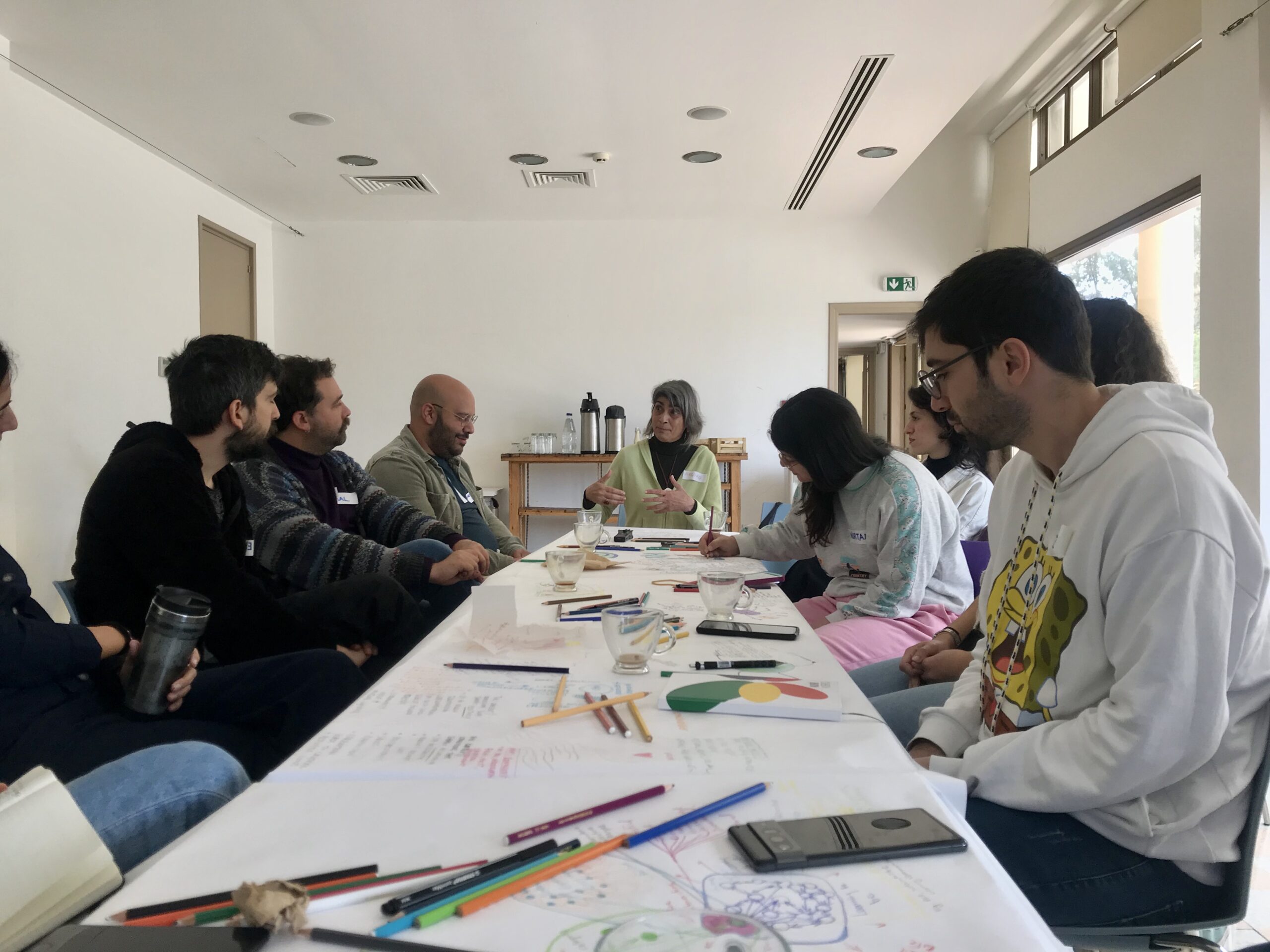
Photo by: Denise Araouzou
A long single sheet of white paper was unrolled along the length of the table inviting everyone to come around a single, uninterrupted surface. This activity was conceived to begin building a shared understanding of the words we use to speak about our practices, how we understand them, to explore overlaps and understand the differences and contradictions of what we do. All were invited to make markings, in any way they wish, materials provided included pencils, coloured pencils, markers, clay and tracing paper.
Questions
What/how is your practice/s?
How do you feel while you are doing it?
The context/conditions/systems that shape your practice, negatively and positively?
Who is involved in co-creating with you?
Who is affected by your practice?
What are the consequences of your practice?
What are the material needs and outcomes of your work?
What part of it is connected to ecopedagogies already?
iii. Embodied & Sensorial
The Mirror Walk
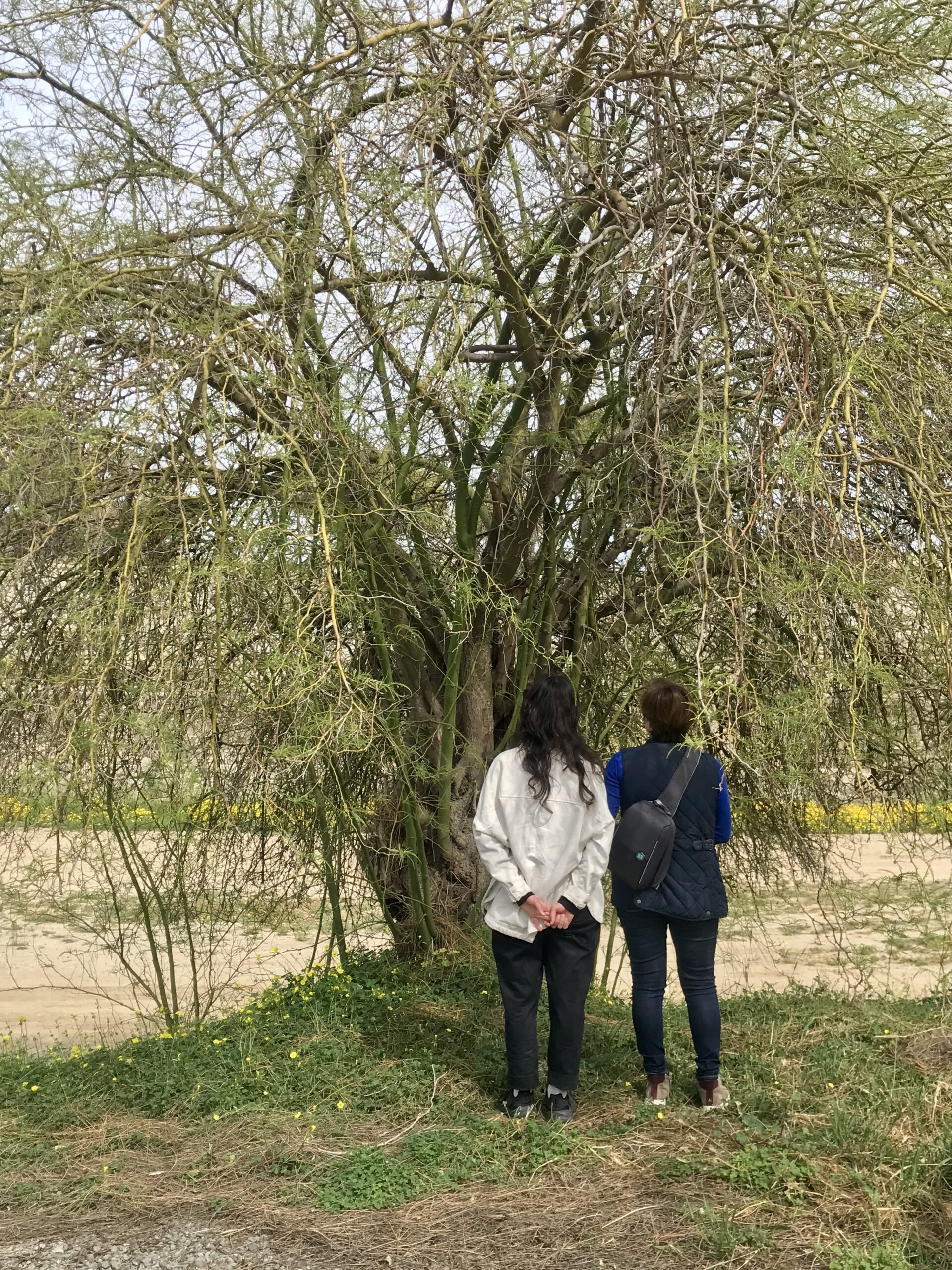
Photo by: Denise Araouzou
The Mirror Walk, awakens sensory awareness and a fresh sense of gratitude for life, as well as providing a change of pace and focus. An excellent training for the ecological self, it helps people experience the world as their larger body — imagining when they open their eyes, at specified moments, they are looking in a mirror. Hence the name. Suitable at any point in the workshop, it develops trust among participants and moves beyond words to immediacy of contact with the natural world. An outdoor setting, with growing things, is most rewarding, but even a city street with an occasional tree has served. Forming pairs, people take turns being guided with eyes closed, in silence. Without vision, they use their other senses with more curiosity than usual and practice entrusting another person with their safety.
Their partners, guiding them by the hand or arm, offer them various sensory experiences — a flower or leaf to smell, the texture of grass or tree trunk, the sound of birds or children playing — all the while without words. The tempo is relaxed, allowing time to fully register each sensory encounter. Every so often, the guide adjusts her partner’s head, as if aiming a camera, and says, “Open your eyes and look in the mirror.”
The ones being guided open their eyes for a moment or two, and take in the sight. Demonstrate with a volunteer as you give instructions. Remind participants to remain silent, except for the periodic invitation to look in the mirror. After a predetermined length of time, roles are changed. Provide an audible signal when it is time to switch, using a loud bell or alarm tone.
When they return at the end of the second shift, each pair forms a foursome with another pair to speak of the experience. After ten minutes or so, you may wish to invite a general sharing in the whole group. “What did you notice?” “What surprised you?” “What feelings came up, in guiding or being guided?”
Instructions by Joana Macy and Molly Young Brown, The Work that Reconnects (2014)

Photo by: Denise Araouzou
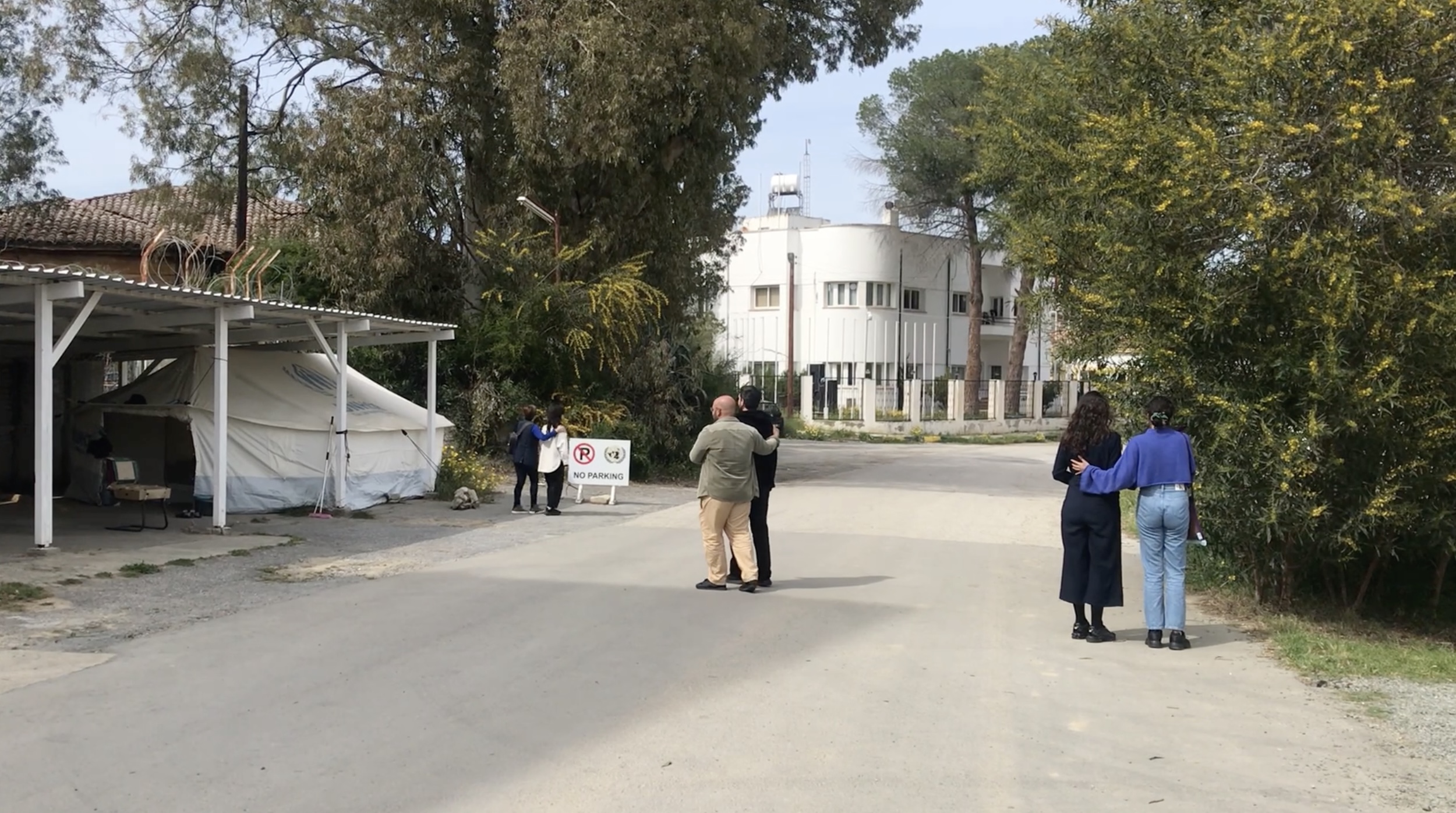
Photo by: Denise Araouzou
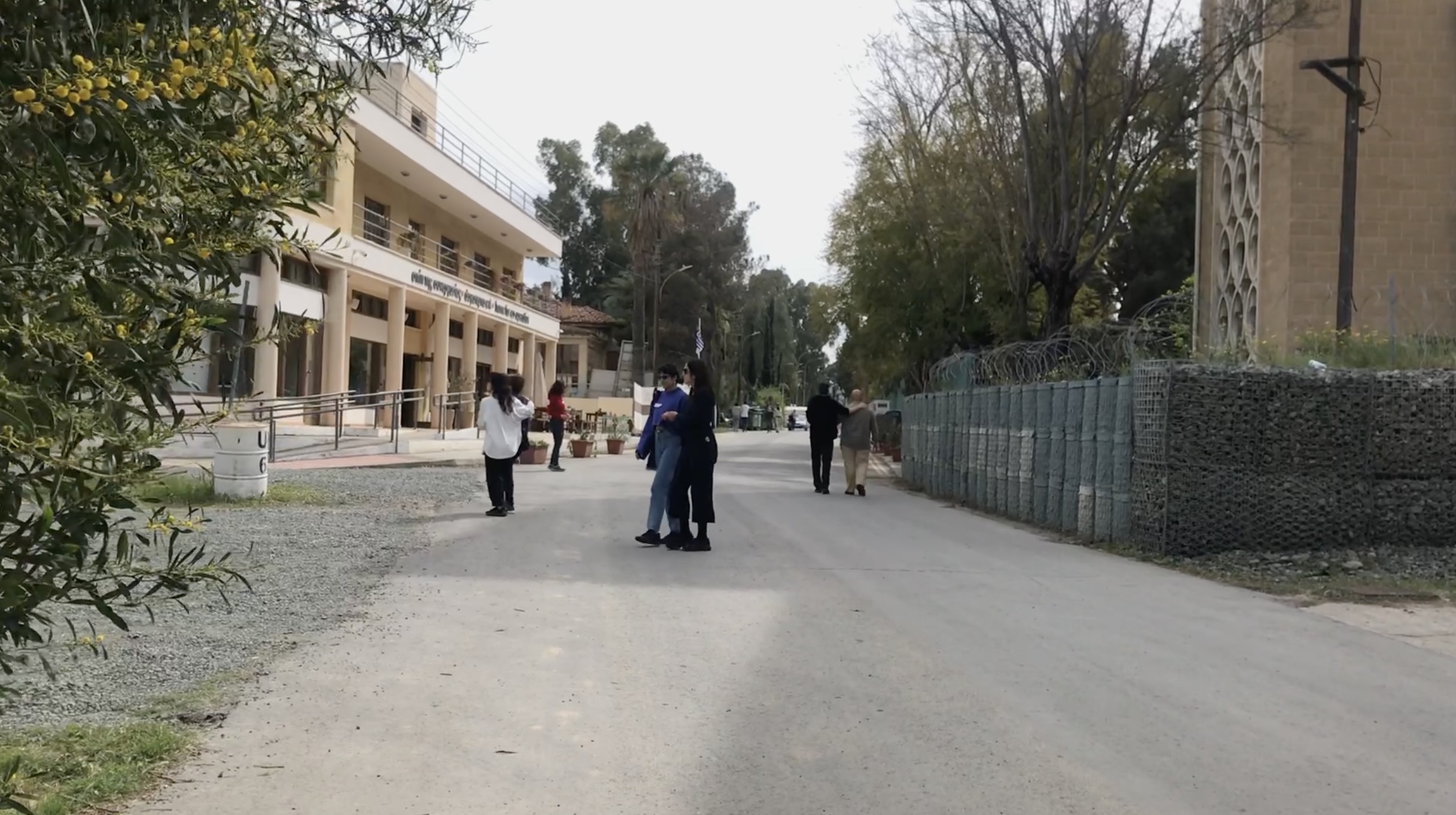
Photo by: Denise Araouzou
The Systems Game
This lively, engrossing process provides a direct experience of the dynamic nature of open systems. It dramatizes two features of the new paradigm view of reality:
1. that life is composed not of separate entities so much as of the relations between them
2. these relations allow life to self-organizeMethod
Have people stand in a circle within an open space large enough for them to move around freely. Then give two instructions: (1) Mentally select two other people, without indicating whom you have chosen. (2) Move so as to keep at all times an equal distance between you and each of these two people. Demonstrate that this does not mean just staying at the midpoint between the two others.
At your signal, people begin to circulate, each movement triggering many others in an active, interdependent fashion. People find they are, by necessity, maintaining wide-angle vision and constant alacrity of response. The process is purposeful, suspenseful, laced with laughter. It speeds up for a while, then may abate, accelerate and again slow down toward equilibrium, but it rarely comes to stasis. Let it continue for some minutes, then tell people to stop and reflect on this together.
Instructions by Joana Macy and Molly Young Brown, The Work that Reconnects (2014)
iv. Perspective Shifting
Widening Circle
People sit in groups of three or four. Ask them each to choose a particular issue or situation that concerns them. After a minute of silence, invite them to take turns speaking about their issue. Each person will speak to their issue from four perspectives while the others in the group listen:
1. from their own point of view, including their feelings about the issue
2. from the perspective of a person who holds opposing views on this issue, introducing themselves and speaking as this person, using the pronoun I.
3. from the viewpoint of a nonhuman being that is affected by that particular situation, I/e non-human
4. lastly, in the voice of a future human whose life is affected by the choices made now on this issue.After describing these four perspectives at the outset, the guide provides cues for each perspective as each speaker’s turn unfolds, reminding them to always speak in the first person. Allow some two to three minutes for each perspective, perhaps a little longer for the first. The one speaking may find it helpful to stand up and turn around before moving on to the next voice. Use an uncharged, almost casual tone in your instructions; you are not asking people to channel or be omniscient, but simply to imagine another point of view. Allow some silence as they choose for whom they will speak and imaginatively enter that other’s experience, so they can respect it and not perform a caricature of it. It is a brave and generous act to make room in your mind for another’s experience and to lend them your voice; let the participants appreciate that generosity in themselves and each other.
Instructions by Joana Macy and Molly Young Brown, The Work that Reconnects (2014)
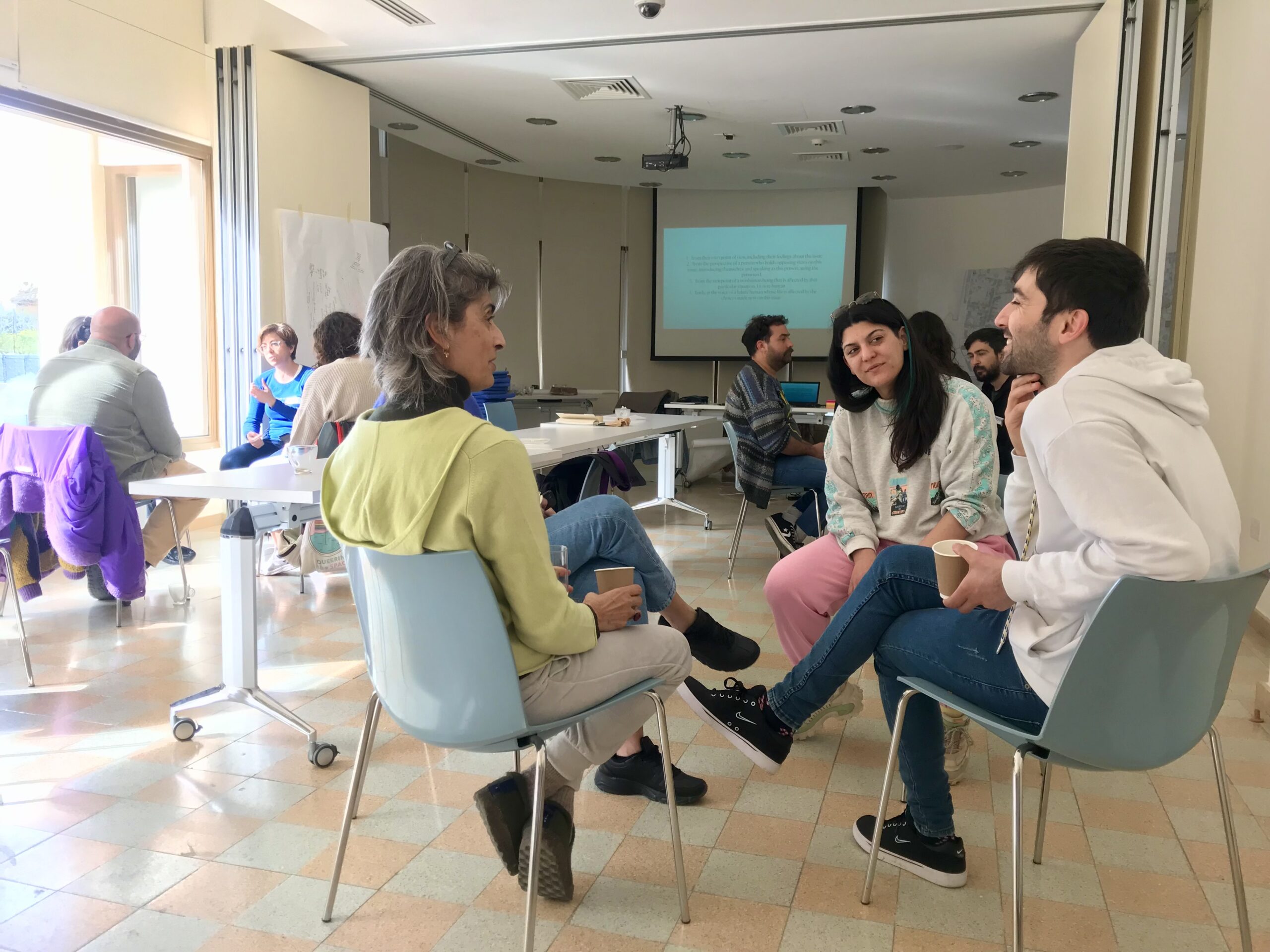
Photo by: Denise Araouzou
v. Know-how Rounds
Write down on a post-it 4-5 issues that are close/dear to you. On a different post-it, write down 4-5 skills you have, or things you enjoy doing and can share, teach or show someone. On a third post-it write down things you would like to learn. Stick them all on a chair and take a walk around the room to read what others have written. Take time to chat with each other if you find something that sparks your interest. This activity was inspired by adrienne maree brown (2022).
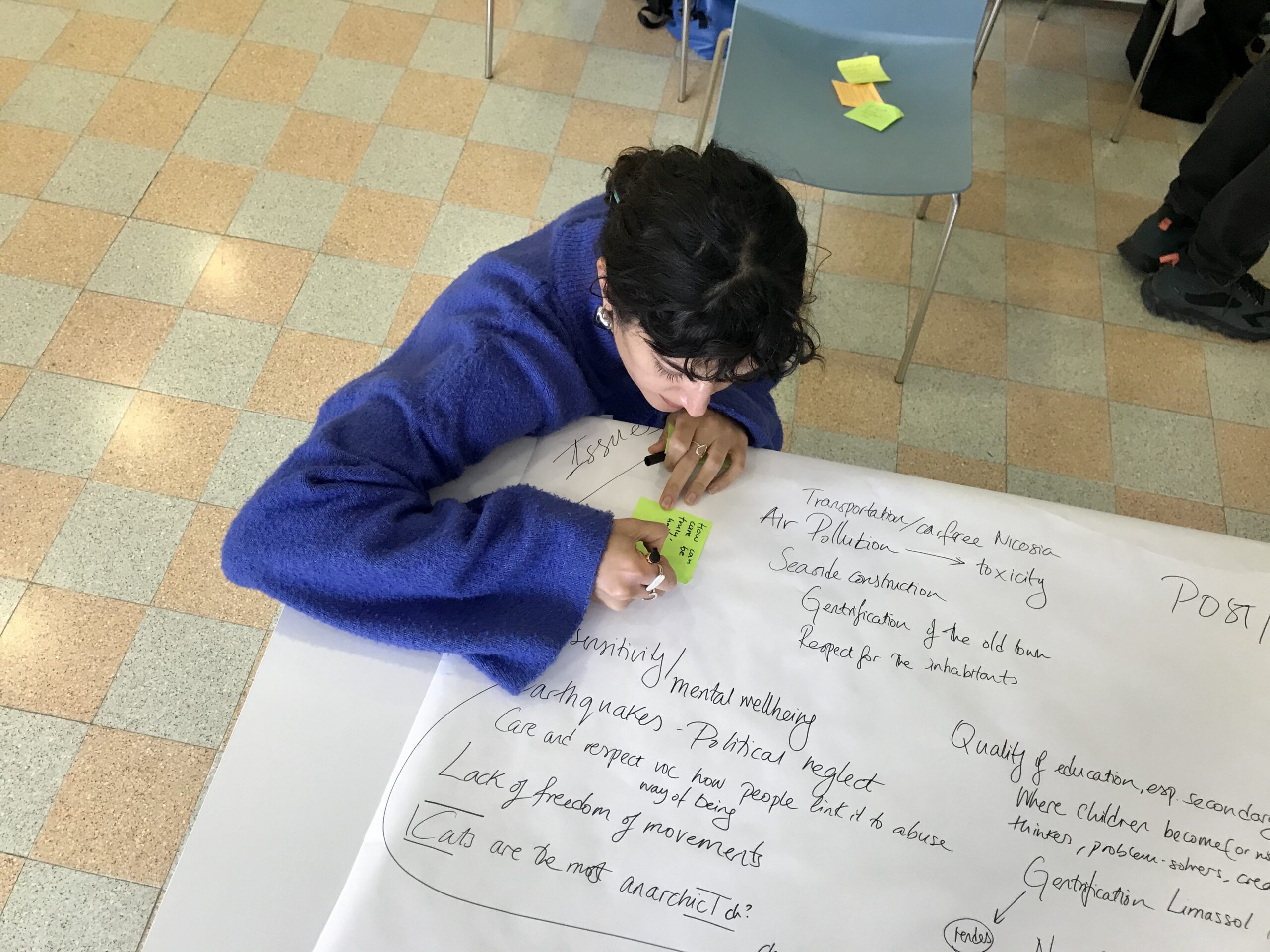
Photo by: Denise Araouzou
References
brown, adrienne maree. (2017). Emergent Strategy. AK Press.
Griffiths, D. (2015). Queer Theory for Lichens. UnderCurrents: Journal of Critical Environmental Studies, 19, 36–45. https://doi.org/10.25071/2292-4736/40249
Hackers & Designers. (2022). First…Then, Repeat. Workshop scripts in practice (A. Groten, Ed.). Hackers & Designers.
Hilton, L. (2015, July 2). Mapping the Wander Lines: The Quiet Revelations of Fernand Deligny. Los Angeles Review of Books. https://lareviewofbooks.org/article/mapping-the-wander-lines-the-quiet-revelations-of-fernand-deligny/
jan van eyck academie. (2022, September 22). Bayo Akomolafe, URGENCY INTENSIVE: IPACC Working Group IV – DAY I. shorturl.at/FTW37
Macy, J., & Brown, M. Y. (2014). Coming back to life : the updated guide to The work that reconnects. New Society Publishers.
Palmer, L. A. (2023). The Lichen Museum. University of Minnesota Press.


